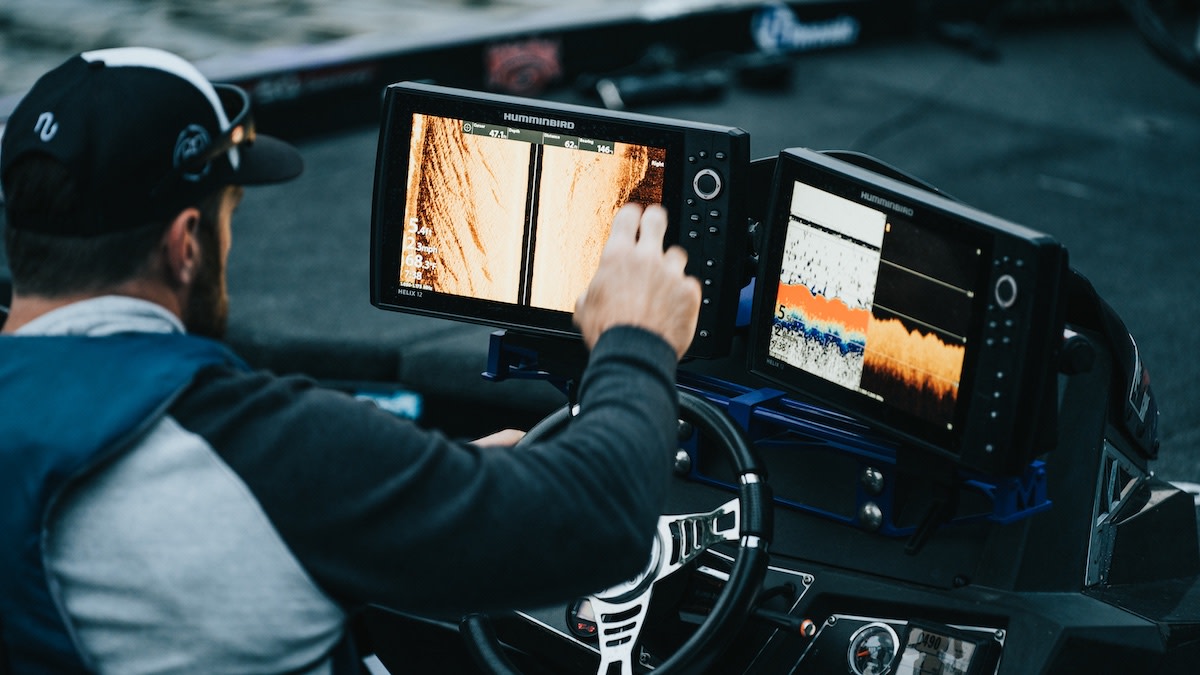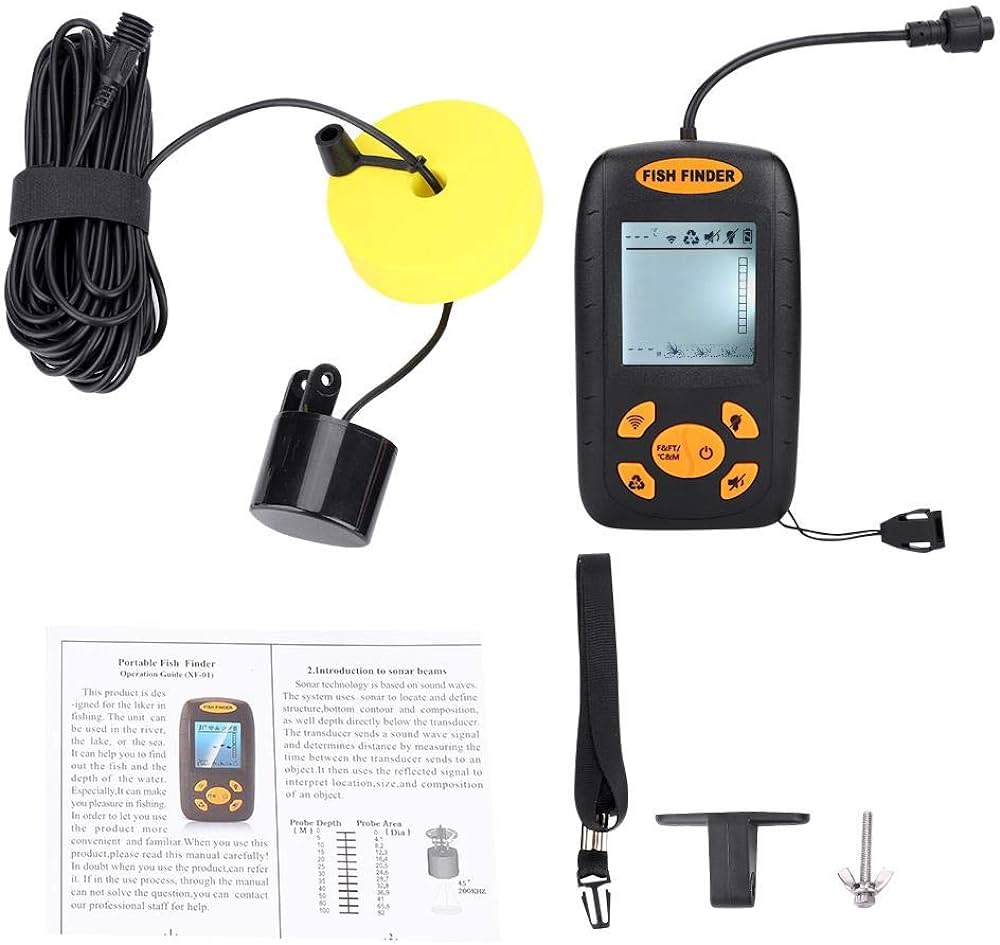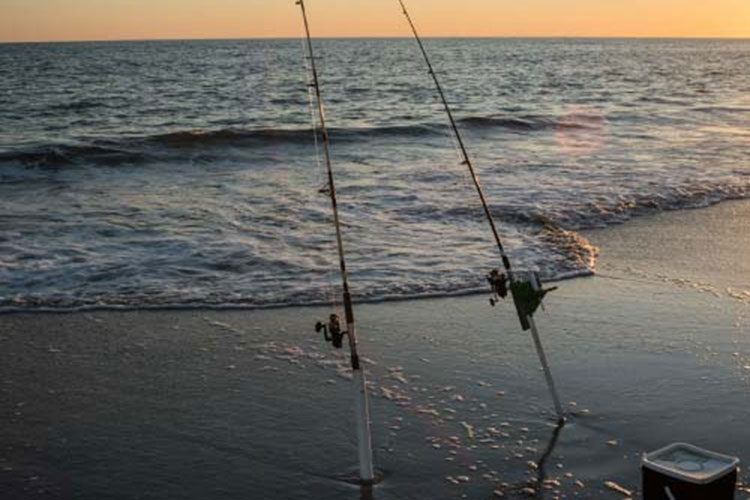Last updated on March 26th, 2024 at 08:05 am
Last updated on March 26th, 2024
To read the bottom on a fish finder, look for an icon on the screen that represents the bottom structure, read the depth at which the icon is displayed, and cast your line accordingly.
Understanding The Basics Of Fish Finders
Understanding the Basics of Fish Finders Fish finders are devices used by anglers to locate fish underwater. They work by using sonar technology to detect and display objects, including the bottom structure of water bodies. There are different types of fish finders available, each with its own set of features and capabilities.
Some common types include side imaging, down imaging, and scan sonar. Fish finders work by emitting sound waves that bounce off objects in the water and then return to the device. The time it takes for the sound waves to return to the fish finder is used to calculate the depth and location of objects, including fish and the bottom structure.
By interpreting the sonar images displayed on the fish finder screen, anglers can determine the presence of fish and identify the type of bottom structure, whether it is hard or soft. Overall, fish finders are valuable tools for fishermen, helping them make informed decisions about where to cast their lines and increase their chances of a successful catch.
Interpreting Sonar Images On Fish Finders
To effectively interpret sonar images on fish finders, it is crucial to understand the different components of the fish finder screen. Familiarize yourself with the icons and symbols displayed on the screen, as they provide valuable information about fish and bottom structure.
Analyzing the sonar readings is also essential in interpreting the bottom structure. Different sonar types may show variations in bottom hardness, so it is important to recognize the differences between hard and soft bottoms on the fish finder. By observing the depth at which icons are displayed on the screen and analyzing the sonar readings, you can gain valuable insights into the underwater environment and improve your fishing experience.
Techniques For Reading Bottom On Fish Finders
Techniques for reading bottom on fish finders involve identifying different types of bottom structures on the screen. By differentiating between hard and soft bottoms, you can adjust fish finder settings for better bottom reading. Understanding bottom structures helps in knowing where to anchor and find fish.
It also helps determine how to interpret the information displayed on the fish finder screen. Reading and understanding fish finders is as simple as looking for icons displayed on the screen and noting their corresponding depths. By observing the changes in bottom hardness, you can identify potential fishing spots.
Mastering the skill of reading bottom on a fish finder enhances your fishing experience and improves your chances of success.
Advanced Tips And Tricks For Reading Bottom On Fish Finders
Advanced tips and tricks for reading bottom on fish finders include utilizing side imaging and down imaging features. These features provide enhanced bottom reading by showing a detailed view of underwater structures. Additionally, analyzing the sonar returns can help identify fish activity near the bottom, giving valuable insights for successful fishing.
Another useful technique is using GPS and waypoints to mark and revisit promising bottom structures. This allows anglers to easily locate and target productive areas. By mastering these techniques, anglers can effectively read the bottom on their fish finders and increase their chances of a successful fishing experience.
Common Challenges And Troubleshooting Techniques
Dealing with interference and false readings on the fish finder screen can be a common challenge. When it comes to overcoming issues with bottom reading in different fishing environments, troubleshooting techniques are crucial. To troubleshoot common problems with fish finder bottom reading, it’s important to understand the causes of interference and false readings.
This can include factors such as boat speed, water depth, and underwater debris. By adjusting the sensitivity settings, using proper installation techniques, and ensuring a clean transducer, you can minimize interference and obtain accurate bottom readings. Additionally, adjusting the frequency and choosing the right transducer type for the fishing environment can also help improve bottom reading on the fish finder screen.
Understanding these techniques will enhance your fishing experience and increase your chances of locating fish successfully.
Frequently Asked Questions Of How To Read Bottom On Fish Finder
How Do I Know What Bottom My Fish Finder Is?
To determine the bottom of your fish finder, look for an icon on the screen and read the depth at which it is displayed. Cast your line where you see a large rock or expect a certain species to be found.
What Does Hard Bottom Look Like On Fish Finder?
The hard bottom on a fish finder appears as a solid, dense, and firm structure on the screen.
What Is The Difference Between Hard Bottom And Soft Bottom On Fish Finder?
A hard bottom appears as solid and firm, while a soft bottom appears mushy or loose on a fish finder.
How Do You Read And Understand Fish Finders?
To read and understand fish finders, simply look for icons on the screen and note the depth at which they appear. Use this information to determine where to cast your line. For more detailed information, check out resources like FishFinders.
Conclusion
Understanding how to read the bottom of a fish finder is crucial for successful fishing trips. By interpreting the sonar images correctly, you can determine the type of bottom structure you’re dealing with, whether it’s rocky, soft, or a combination of both.
This information helps you identify potential fish-holding spots and target your casts more effectively. Look for specific icons on the screen, pay attention to the depth at which they are displayed, and cast accordingly. If you see a large rock on your Fish-ID fish finder and expect a certain species to be found around there, that’s where you would cast.
Remember that blue represents the weakest return, while white indicates no return. The color yellow usually indicates a larger fish. Mastering the art of reading the bottom on a fish finder takes practice, but with time and experience, you’ll become a pro at deciphering the underwater world and reaping the rewards of a fruitful fishing adventure.





